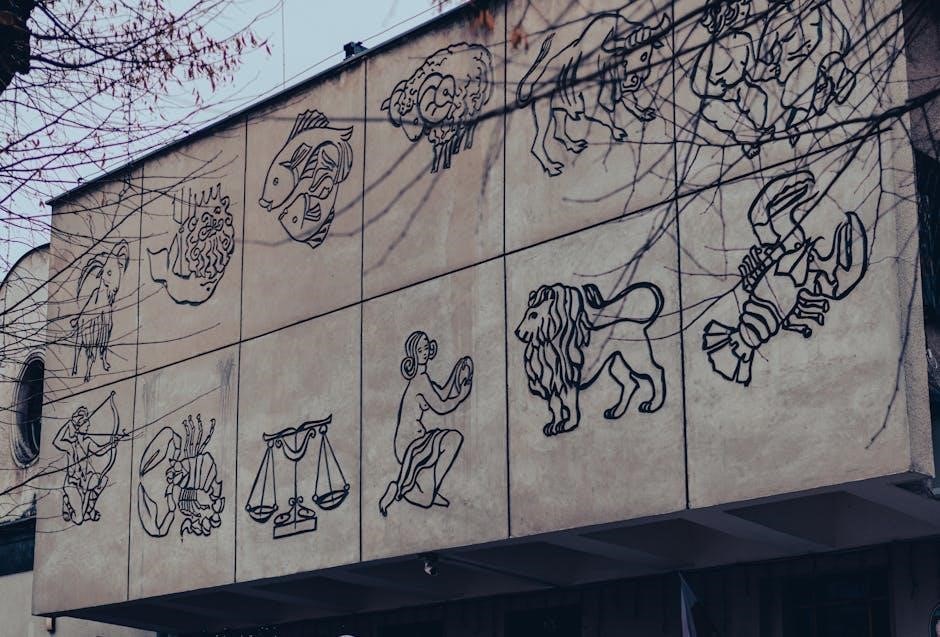Libras, or Língua Brasileira de Sinais, is Brazil’s official sign language, recognized by law for deaf communication. It’s a visual language requiring facial and manual expressions, with various free PDF resources available for learning, such as basic courses and alphabet guides, promoting accessibility and cultural understanding.

1.1 Definition and Importance of Libras
Libras, or Língua Brasileira de Sinais, is the official sign language of Brazil, recognized as a natural language for the deaf community. It is a visual and spatial language, expressed through hand movements, facial expressions, and body gestures. Libras is essential for communication, education, and social inclusion, ensuring deaf individuals can participate fully in society. Its importance lies in preserving deaf culture and promoting equality. The Brazilian government has legally recognized Libras, highlighting its role in education and public services. With free PDF resources available, learning Libras is accessible, fostering understanding and integration of the deaf community into mainstream life.
1.2 Brief History of Libras in Brazil
Libras, or Língua Brasileira de Sinais, has its roots in the 19th century, influenced by French sign language and local gestures. The first formal recognition came in 2002 with Lei Nº 10.436, establishing Libras as an official language for the deaf community. Historically, deaf education in Brazil was shaped by European methods, but Libras evolved as a unique linguistic system. Despite challenges, the deaf community preserved their language, leading to its legal acknowledgment. Today, Libras is integral to deaf culture, with free PDF materials and courses available, fostering its dissemination and use in education and daily life across Brazil.

Legal Framework and Recognition of Libras
Libras is officially recognized in Brazil through Lei Nº 10.436/2002 and regulated by Decreto Nº 5.626/2005, ensuring its use in education, public services, and accessibility for the deaf community.
2.1 Lei Nº 10.436/2002 and Its Significance
Lei Nº 10.436/2002 officially recognized Libras as the legal language of Brazil’s deaf community, ensuring its use in education, public services, and legal proceedings. This law mandated Libras inclusion in educational curricula and public institutions, promoting accessibility and equality. It also acknowledged the cultural and linguistic rights of deaf individuals, fostering inclusivity nationwide. Additionally, it laid the groundwork for further legislation, such as Decreto Nº 5.626/2005, which regulated its implementation. Resources like “Língua Brasileira de Sinais ⏤ Libras” and “Curso Básico da Libras” provide educational support, making this law a cornerstone for deaf empowerment and societal inclusion.
2.2 Decreto Nº 5.626/2005 and Its Implications
Decreto Nº 5.626/2005 regulates Lei Nº 10.436/2002, ensuring Libras is used in public services, education, and employment. It mandates the creation of Libras courses for public servants and requires interpreters in legal and healthcare settings. This decree also standardizes Libras teaching methods and materials, promoting accessibility and inclusivity. Resources like “Curso Básico da Libras” and “Alfabeto Brasileiro de Sinais” align with these standards, aiding in widespread adoption. By enforcing these measures, the decree fosters a more inclusive society, enabling deaf individuals to fully participate in public life. Its implementation has significantly improved accessibility and awareness, benefiting both the deaf community and broader society;

Learning Resources for Libras
Popular PDF courses like “Curso Básico da Libras” and “Língua Brasileira de Sinais” are widely available, offering structured lessons for beginners. Additional resources include books and online video tutorials.
3.1 Popular PDF Courses for Libras
Several popular PDF courses are available for learning Libras, such as “Curso Básico da Libras” and “Língua Brasileira de Sinais.” These resources provide structured lessons, covering essential topics like the Libras alphabet, basic signs, and daily communication phrases. Many courses are designed for self-study, offering clear visual aids and practical exercises. For example, “Libras em Contexto” and “Brincando e Aprendendo com Libras” are widely downloaded, catering to both beginners and intermediate learners. These PDF materials are free, accessible, and ideal for those seeking to master Brazil’s sign language effectively. They are perfect for independent learning and practice.
3.2 Recommended Books and Study Materials
For deeper learning, books like Língua Brasileira de Sinais: Curso Básico and Brincando e Aprendendo com Libras are highly recommended. These materials offer comprehensive insights into Libras, including grammar, vocabulary, and cultural context. Additionally, workbooks like Libras em Contexto provide practical exercises to enhance proficiency. Many of these books are available in PDF formats, making them easily accessible for self-study. They cater to both beginners and advanced learners, ensuring a well-rounded understanding of Brazil’s sign language. These resources are essential for anyone aiming to master Libras effectively, whether for personal growth or professional purposes.

Practical Applications of Libras
Libras is widely used in education, communication, and daily interactions, enhancing inclusion for the deaf community. It fosters understanding in family settings and workplace environments, promoting accessibility and social integration effectively.

4.1 Using Libras in Education and Communication
Libras is a vital tool for inclusive education and communication, enabling deaf students to learn effectively. Schools integrate Libras into curricula, ensuring equal access to knowledge. Teachers undergo training to master Libras, fostering a supportive learning environment. Communication barriers are broken, allowing deaf individuals to express themselves freely. PDF resources, such as alphabet guides and basic courses, aid in learning and teaching Libras. This language not only facilitates education but also enhances daily interactions, promoting accessibility and inclusion in various settings, from classrooms to community engagements, ensuring the deaf community can fully participate in societal activities.
4.2 Sign Language in Family and Daily Life
Libras plays a crucial role in fostering communication within families, especially those with deaf members. It strengthens bonds by enabling effective dialogue, helping both deaf and hearing individuals connect seamlessly. In daily life, Libras is used for simple interactions, like greeting neighbors or discussing routines. Families often learn Libras together, creating an inclusive environment. Additionally, resources like the PDF book “Brincando e Aprendendo com Libras” offer fun, interactive ways to learn sign language at home. This promotes cultural understanding and ensures that deaf individuals feel valued and integrated into family and societal activities, enhancing overall quality of life and social engagement.
Cultural and Social Aspects of Libras
Libras is a vital part of Brazilian culture and identity, particularly for the deaf community. It fosters unity, pride, and social inclusion, recognized as an official language, reflecting the country’s diversity and commitment to accessibility.
5.1 Identity and Community in the Deaf Culture
Libras is a cornerstone of deaf culture in Brazil, fostering identity and community among deaf individuals. It enables expression, social interaction, and cultural exchange, strengthening the sense of belonging and pride. The language is deeply tied to the history and resilience of the deaf community, promoting unity and solidarity. Through Libras, deaf individuals connect with their heritage and build meaningful relationships, creating a vibrant and inclusive cultural environment. Educational resources, such as PDF guides, help spread awareness and accessibility, further empowering the community and preserving its unique identity.
5.2 Art and Expression in Libras
Libras serves as a powerful medium for artistic expression, enriching deaf culture through storytelling, theater, and dance. Its visual and gestural nature allows for creative interpretations, making it a unique form of communication. Many artists use Libras to convey emotions and experiences, fostering cultural exchange. PDF resources, such as “Brincando e Aprendendo com Libras,” highlight its artistic potential, offering insights into its use in performances and visual arts. These materials not only teach the language but also showcase its role in preserving and celebrating deaf identity, making Libras a vibrant part of Brazil’s cultural landscape.
- Storytelling through handshapes and facial expressions.
- Dance performances that interpret Libras narratives.
- Theater groups that bring Libras stories to life.

Technological Tools for Libras Learning
Apps, online platforms, and video tutorials provide interactive ways to learn Libras. Free PDF materials and digital courses are widely available, enhancing accessibility for learners.
- Apps for practicing sign language.
- Online platforms offering free PDF resources.
- Video tutorials for visual learning.
6.1 Apps, Videos, and Online Platforms
Various apps and online platforms offer interactive Libras learning tools, such as video tutorials and downloadable PDF materials. These resources provide step-by-step guides for mastering sign language, including hand movements and facial expressions. Popular apps feature interactive exercises, while YouTube channels and educational websites share video lessons. Many platforms also offer free PDF downloads, such as alphabet guides and basic course materials, making learning accessible. These tools cater to different learning styles, ensuring that users can practice Libras conveniently. They are particularly useful for self-study and complement traditional teaching methods, fostering a deeper understanding of Brazil’s sign language.
6.2 Accessing Free PDF Materials
Free PDF materials for learning Libras are widely available online, offering comprehensive resources for beginners and advanced learners. Websites like Elo7 and educational platforms provide downloadable PDFs, including basic courses, alphabet guides, and themed lessons. These materials often include visual aids and step-by-step instructions, making them ideal for self-study. Popular resources such as “Curso Básico da Libras” and “Língua Brasileira de Sinais” are frequently downloaded, covering essential topics like handshapes, facial expressions, and common signs. These PDFs are easily accessible, enabling learners to practice Libras at their own pace and deepen their understanding of Brazil’s sign language culture.

Challenges and Opportunities
Libras PDF materials face challenges like limited advanced resources but offer opportunities for widespread accessibility, promoting cultural understanding and inclusive education across Brazil.
7.1 Overcoming Barriers in Libras Education
Libras education faces challenges such as limited advanced materials and accessibility issues, but free PDF resources and online platforms are bridging gaps. These tools enhance inclusivity, allowing learners to practice visually and develop manual dexterity. Community-driven initiatives and legislative support further promote Libras education, ensuring deaf individuals and hearing learners gain equal opportunities. By addressing these barriers, Libras education fosters cultural understanding and social integration, proving vital for Brazil’s diverse population.

7.2 The Future of Libras in Brazil
The future of Libras in Brazil holds promise, with increasing recognition of its cultural and social value. Technological advancements, such as accessible PDF materials and online platforms, are expanding learning opportunities. Efforts to integrate Libras into education and public services aim to enhance inclusivity. Advocacy for deaf rights and linguistic preservation is growing, supported by legislation and community initiatives. As awareness rises, Libras is expected to play a vital role in fostering communication and unity across Brazil, ensuring deaf individuals have equal access to information and opportunities. This progress reflects a commitment to diversity and the empowerment of the deaf community.
